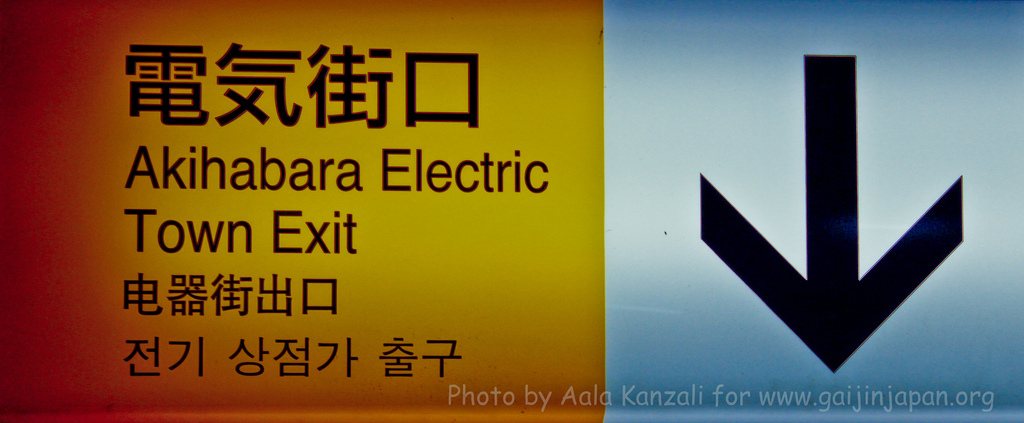Hi guys,
Quick story time. My Japanese, while not great, is not
that terrible. However, every so often I manage to mess things up because I don't even bother
trying to use my Japanese. I am not a clever man. Let me illustrate:
I'll start the story off by explaining that I try to avoid literal translation whenever possible. A while ago, I came across the theory that translation is the enemy of true fluency; the idea being that you shouldn't translate a Japanese word into an English word and then think about the concept expressed, you should simply jump straight from the Japanese to the concept. For instance, when I learn the word れいぞく(
reizoku) I try to teach myself that it means "the magic silver box in which we put food after dinner and then immediately take it out in a few hours for a midnight snack"--instead of teaching myself that れいぞく means "refrigerator" which in turn means "the magic silver etc. etc."
(This approach is even more meritorious when dealing with things like names. It's not particularly helpful to think of my friend as "Mr. Bamboo Field", I think I'll be served just as well by remembering his name as "Mr. Takeda")
This concept of translation is further complicated by the fact that, for the purposes of this discussion, Japanese uses two different written languages
[Editor's note: This entire paragraph is grossly inaccurate, leaves a lot of things out, and is such an oversimplification that it has more or less crossed over into falsehood; those of you that actually know Japanese, we appreciate your bearing with us for the purposes of the story. Actually, if you do know Japanese you can skip right to making fun of the author because you'll figure out the punchline pretty quickly]
The first language, Hiragana, is phonetic--each character represents a syllable. The second language, Kanji, is used to convey meaning--each character represents a word, thought, or concept. Thus, each kanji has a "reading" that you sound out using hiragana characters. This is further complicated by the fact that kanji has a number of homophones. In essence, the mapping is not one-to-one: While each kanji has a single reading in hiragana [
Ed: *cringe*], a given string of hiragana characters could have multiple representations in kanji, meaning a given string of hiragana characters could have multiple meanings
Thus, when I saw that I would have to take the "Denkigai Exit" at Akihabara Station in order to make my lunch date, I didn't bother translating this word because a) translating is not my habit, especially not for proper nouns and b) unless you already know the word it's difficult to translate without seeing the word's kanji representation
The problem was that when I got to the station and didn't see a single sign for a "Denkigai Exit". There's the Central Exit, the South Exit, no not those . . . the only one left was the "Akihabara Electric Town Exit", that's not it either . . . what the hell is going on here? Where is "Denkigai Exit"???
Up stairs, down stairs, turn left, turn right, I know I've already been this way . . . at this point I'd been wandering around the station for a good five-ten minutes trying to find this elusive Denkigai Exit. I say five-ten because I'm estimating downward from the fifty minutes it felt like as I moved from amused to annoyed to confused to bewildered to truly frustrated to seriously stressed because I didn't want to be late for lunch. Finally, my eyes just happened to glance over the Japanese writing on an exit sign . .
 |
| Photo courtesy of--oh wait, you guys can read it yourself |
See, they gave me the English translation, so silly ol' me didn't even bother looking at the Japanese. It was merely by chance that I noticed the character 電, which is pronounced
den, at which point the following train of thought went through my head in about a half a second:
"Gee, the word 'Denkigai', whose meaning I never actually bothered to translate because I am lazy
". . . could probably be written as 電気街
". . . which would mean something along the lines of 'Electricity District'
"And hey, there are those same three kanji right there on one of the dozen of signs I've walked past in the last few minutes . . .
". . . plus the 口 character which of course just an abbreviation for "exit"
"So that means that the dozens of signs for for "電気街口 Electric Town Exit" . . .
". . . past which I have breezed in an
increasingly angry manner while looking for "Denkigai Exit" . . .
". . . probably mean . . .
". . . huh
". . . yup
". . . well
". . . now I feel like an idiot"
Moral of the story: Dude, Noah, at least
make an attempt not to wander back and forth around the train station like a dumb tourist. Just try, yeah? Can you do that for us? Just try?
Made it to lunch with just barely a minute to spare :P
Noah out




















































